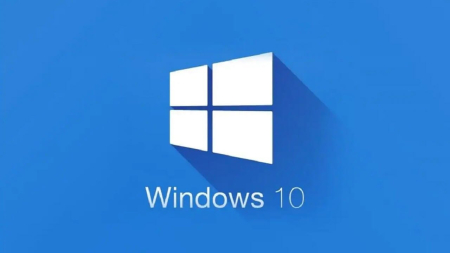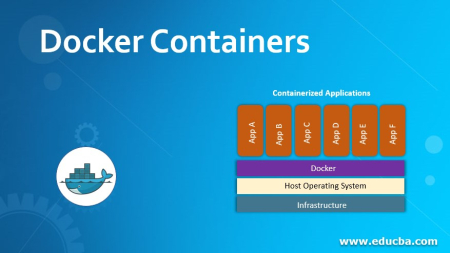Top Strategies for Enhancing Cybersecurity: A Comprehensive Guide
-
10/04/2023
-
697
-
0
As the threat of cyber attacks continues to increase, businesses and individuals need to adopt effective strategies for enhancing their cybersecurity measures.
Related posts
10 Essential Strategies for Mobile App Optimization
How to Optimize App Description on App Store and Google Play
1. Employee Education and Training
Employee education and training are essential components of an effective cybersecurity strategy. In this section, we will discuss some ways to educate and train employees on best practices for cybersecurity.
Teach employees to recognize and report suspicious emails or links: Phishing attacks remain a prevalent form of cyber attack. Employees should be educated on how to recognize suspicious emails or links and how to report them to the IT department. This includes checking the sender's email address; looking for grammar or spelling errors, and avoiding clicking on links or downloading attachments from unknown sources.
Regularly provide training on cybersecurity best practices: Cybersecurity threats are constantly evolving, and it is important for employees to stay informed on the latest best practices. Regularly providing training on topics such as password management; data privacy, and social engineering can help employees stay vigilant and aware of potential threats.

Employee Education and Training of Cybersecurity, Source: Asoservice.com
Create a culture of cybersecurity awareness and accountability: Establishing a culture of cybersecurity awareness and accountability can go a long way in preventing cyber attacks. Encouraging employees to report potential security incidents; rewarding good security practices, and providing a clear channel for reporting security concerns can help create a sense of ownership and responsibility for cybersecurity across the organization.
By investing in employee education and training, businesses can create a workforce that is better equipped to identify and mitigate cybersecurity threats.
2. Network Security of Cybersecurity
Network security is a critical component of a comprehensive cybersecurity strategy. In this section, we will discuss some key measures businesses can take to enhance their network security.
Use firewalls and intrusion detection systems: Firewalls are the first line of defense against external cyber attacks. They help monitor and control network traffic; and can prevent unauthorized access to sensitive data. Intrusion detection systems can also help detect and respond to cyber attacks in real-time.
Implement strong passwords and multi-factor authentication: Passwords remain one of the weakest links in cybersecurity. Implementing strong password policies, such as requiring a mix of characters and regular password changes; can help reduce the risk of password-related cyber attacks. Additionally, multi-factor authentication can provide an extra layer of security by requiring additional verification, such as a code sent to a mobile device.
Regularly update and patch software and systems: Cyber attackers often target vulnerabilities in outdated software and systems. Regularly updating and patching software; and systems can help address known vulnerabilities and reduce the risk of cyber attacks.
By implementing these measures, businesses can enhance their network security and reduce the risk of cyber attacks. You can refer more information about this by reading macOS app reviews
3. Incident Response Plan of Cybersecurity
An incident response plan is a crucial part of a comprehensive cybersecurity strategy. In this section, we will discuss some key components of an effective incident response plan.
Develop and regularly update an incident response plan: An incident response plan should outline the steps to be taken in the event of a cyber attack, including who to notify, what actions to take, and how to communicate with stakeholders. The plan should be regularly updated to reflect changes in the threat landscape and the organization's infrastructure.
Have a designated incident response team and chain of command: A designated incident response team should be responsible for executing the incident response plan. This team should have a clear chain of command, with defined roles and responsibilities for each team member.
Practice and test the incident response plan regularly: Practicing and testing the incident response plan regularly can help ensure that the plan is effective and up-to-date. Tabletop exercises, simulations, and penetration testing can help identify areas for improvement and provide opportunities for the incident response team to practice their response.
By developing and regularly updating an incident response plan, businesses can minimize the impact of cyber attacks and reduce the risk of data loss or other negative consequences. You can buy keyword app installs to increase app ranking faster.
4. Backup and Recovery
Backup and recovery are essential components of a comprehensive cybersecurity strategy. In this section, we will discuss some key measures businesses can take to enhance their backup and recovery capabilities.
Develop a backup and recovery plan: A backup and recovery plan should outline the processes and procedures for backing up and restoring critical data and systems. This plan should include information on how often backups are performed, where they are stored, and who is responsible for executing the plan.
Use multiple backup locations: Storing backups in multiple locations can help ensure that data can be restored in the event of a cyber attack or other disaster. Backups should be stored both on-site and off-site, with off-site backups stored in secure and geographically diverse locations.
Test backups regularly: Regularly testing backups can help ensure that they are functioning properly and can be restored in the event of a cyber attack or other disaster. Backups should be tested at least once a year to ensure they can be fully restored.
Developing a backup and recovery plan and regularly testing backups, businesses can minimize the impact of cyber attacks and other disasters and ensure the continuity of their operations.
5. Access Control of Cybersecurity
Access control is a fundamental aspect of a comprehensive cybersecurity strategy. In this section, we will discuss some key measures businesses can take to enhance their access control capabilities.
Implement access control policies: Access control policies should outline who has access to what resources and under what circumstances. Policies should be based on the principle of least privilege, meaning that users should only have access to the resources they need to do their job.
Use strong authentication mechanisms: Strong authentication mechanisms, such as multi-factor authentication, can help prevent unauthorized access to sensitive resources. Authentication mechanisms should be tailored to the level of risk associated with the resource being accessed.
Monitor and audit access: Monitoring and auditing access can help detect and prevent unauthorized access to sensitive resources. Access logs should be reviewed regularly to identify suspicious activity.
By implementing access control policies, using strong authentication mechanisms, and monitoring and auditing access, businesses can enhance their access control capabilities and reduce the risk of unauthorized access and data breaches.
6. Third-Party Risk Management
Third-party risk management is a critical aspect of a comprehensive cybersecurity strategy. In this section, we will discuss some key measures businesses can take to manage third-party risks.
Conduct due diligence on third-party vendors: Before engaging with a third-party vendor, businesses should conduct due diligence to assess the vendor's cybersecurity posture and their ability to protect sensitive data. You can also increase app installs from Google Ads to improve app users at the cheapest bid price.
Include cybersecurity requirements in vendor contracts: Contracts with third-party vendors should include cybersecurity requirements, such as the use of strong encryption, regular vulnerability testing, and incident response plans.
Monitor third-party vendor activity: Monitoring third-party vendor activity can help detect and prevent unauthorized access and data breaches. Regular security assessments and audits should be conducted to ensure that vendors are meeting contractual obligations.
By conducting due diligence on third-party vendors, including cybersecurity requirements in vendor contracts, and monitoring third-party vendor activity, businesses can reduce the risk of data breaches and other cybersecurity incidents caused by third-party vendors.
Conclusion
In today's digital landscape, businesses face an ever-increasing risk of cyber threats. By implementing the top strategies for enhancing cybersecurity discussed in this comprehensive guide, businesses can protect themselves against these threats and safeguard their sensitive data and operations.
Related posts
How to increase app reviews and app ratings for Android or iOS apps free
How to push Top app keyword ranking for Android & iOS apps and games
Thanks so much for reading this article.
Source: https://asoservice.com/




































Leave a Reply
Your e-mail address will not be published. Required fields are marked *